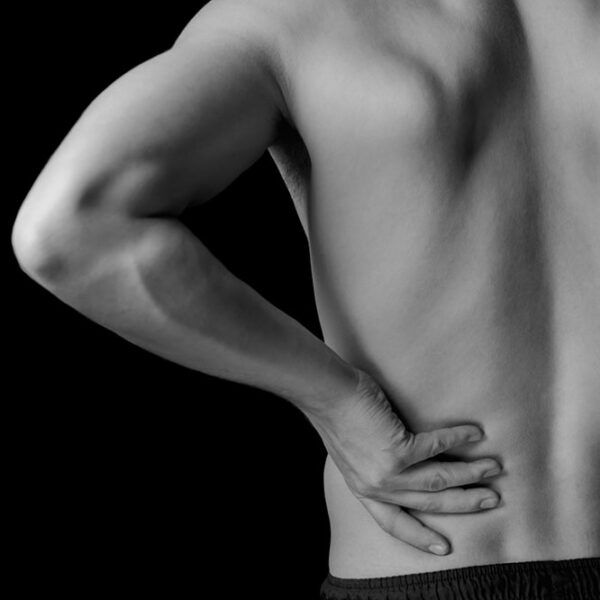Lower Back Pain – Causes and Management Tips
You are not alone if you experience lower back discomfort. Most people suffer from one or more episodes of lower back pain throughout their lifetime. Most of the time, the discomfort subsides within days or weeks; however, in some cases, it might last three months or longer. These prolonged occurrences characterize chronic lower back pain. Regular exercises, relaxation techniques, cognitive-behavioral therapy, and treatments are some lower back pain relief options.

Lower back structure
33 vertebrae make up the spinal column; most back pain frequently occurs in the lower back, which includes five vertebrae in the lumbar region. The spinal canal, which forms the aperture in each vertebra, shields the spinal nerves. Facet joints and discs connect the vertebrae above and below. Numerous ligaments and muscles are grouped to hold these tissues together.
We can move because of the muscles connected to the spinal column, which also supports the spine while bearing the body’s weight. Pressure can cause excessive wear and tear of other structures if some muscles are tight, weak, or unbalanced.
Causes of lower back pain
Disc herniation
A herniated disc in the spine causes lower back discomfort. A disc is a stress absorber between two vertebral bodies in the spine and comprises a soft nucleus and a tough fibrous ring. For instance, disc herniation is a typical issue in the lower back. In this case, the nucleus pulposus of the intervertebral disc bulges backward due to the pressure on it, pressing against the spinal nerves and causing low back discomfort.
Sciatica
Sciatica is the condition that results from the compression of the sciatic nerve by a herniated disc. Back pain may only be modest if the protruding disc is not affecting a nerve. The term sciatica describes the signs and symptoms of sciatic nerve radiculopathy. A nerve root that connects to a nerve, in this example, the sciatic nerve, may become inflamed, compressed, or pinched. This condition is known as radiculopathy. Sciatica symptoms include tingling, numbness, and weakness that travels from the lower back to the buttocks and down the back of the leg.
Treatment and management options
Pain relief options for lower back pain and sciatica are easily available. Some patients may also have pain in the leg and foot on the affected side, close to places where the spinal nerves from the lower back also extend. The pressure in the lower back structures can be reduced, and muscles can be relaxed with regular exercise. One must consult their doctor to determine the exercises that are suitable for their condition.
McKenzie method
One of the lower back pain treatments is the McKenzie Method, a popular low back pain training regimen. Lying prone lowers the pressure on the disc in people with posterior disc herniation. Extension actions might help gently stretch and relax stiff muscles if the pain persists. With time, one’s lower spine also gets more arched, which forces the disc center forward into the proper position and reduces nerve irritation, which decreases pain in the lower back and legs.
Back exercises
Exercising regularly entails advantages beyond relieving strain on the lower back tissues. One may strengthen their core muscles, which are the back and abdominal muscles, and avoid low back pain by including back exercises in their everyday routine.
Cognitive-behavioral therapy
Cognitive-behavioral therapy and relaxation practices, such as meditation while lying down, can help relieve lower back pain. This is so because the brain both senses and controls pain signals. When back structures are destroyed, pain impulses go up the spinal cord from the lower back to the sensory cortex, the part of the brain that detects pain.
However, at least two connections are required; this is not a direct route. The brain can control pain signals at relay stations, which include the spinal cord and the thalamus. The first relay site is found in the dorsal horn of the lumbar spinal cord. Here, a sensory neuron in the lower back transmits the incoming pain signals to a relay neuron in the spinal cord. The pain signals then reach the brain. A kind of neuron conveying signals back from the brain might reduce this pain impulse. We experience less pain due to the brain receiving fewer pain signals. However, these brain impulses can intensify the pain signals if one is under stress. Research demonstrates that people with depression or anxiety feel more pain, whereas patients with a positive mindset and active participation in their treatments experience less pain.
Treatments
The doctor may prescribe treatment options that are compatible with one’s ongoing techniques to relieve lower back pain. The effects can differ substantially depending on what kind of prescription is suggested. Some treatment options relax the muscles, while others affect the neurons in the pain relay stations to lessen the pain impulses.
It is crucial to exercise regularly, practice relaxation techniques, and even take the prescribed treatment options recommended by the healthcare provider for lower back pain relief. However, one may not notice the benefits immediately; it may take time and active engagement.





